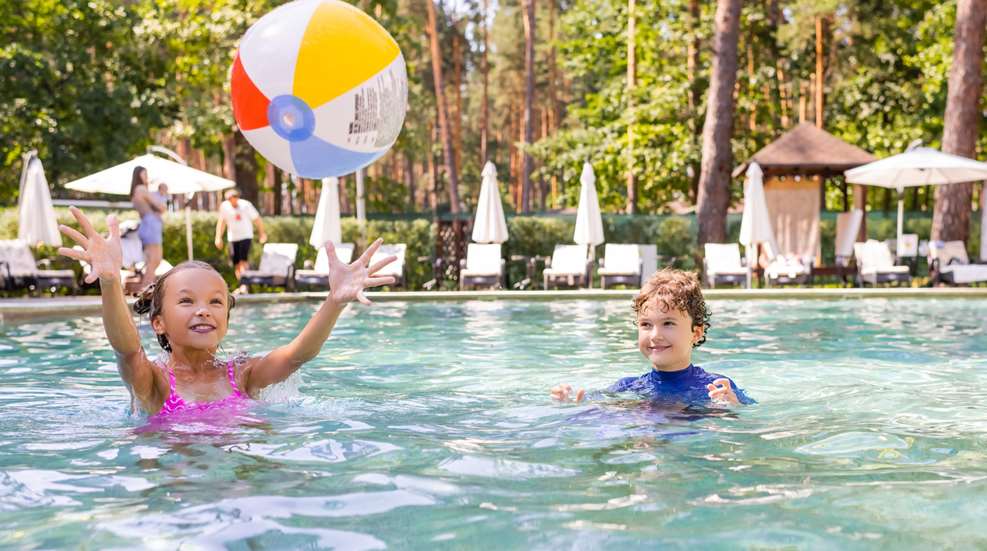
Nothing beats a refreshing swim when the temperatures start to skyrocket. A dip in your friend’s pool, an afternoon at the waterpark, or a weekend beach outing may sound like carefree summer activities, but it’s important to remember they also carry risks. Fortunately, staying safe doesn’t have to put a damper on your fun. With just a little knowledge and a few consistent habits, you can enjoy the water worry-free.
Pay Attention
The single most important thing anyone can do to prevent accidents around water is to pay close attention. Active supervision is non-negotiable, especially when children are around. Even confident swimmers need someone to keep a close eye out, as accidents can happen quickly. It’s easy to get distracted by your phone or conversation with friends, but when someone is in the water, especially a child, your full attention can be the difference between a close call and a tragedy. For younger children or inexperienced swimmers, it is best to stay within arm’s reach so you can intervene immediately if something goes wrong.
Wear Your PFD
Personal flotation devices (PFDs) are essential for anyone boating, kayaking, paddleboarding, or even just hanging out near deep water. Inflatable toys or water wings may offer a false sense of security, but they don’t provide sufficient protection. Life jackets aren’t just for kids; adults should wear them anytime they’re enjoying water sports, on a boat, or aren’t strong swimmers.
Swimming Lessons
Lessons are widely available and affordable, and they’re effective at reducing the risk of drowning. Children as young as six months can start learning basic water familiarity, and adults who never learned should know it’s never too late. Along with learning the basics, it's essential to teach skills such as floating, treading water, and recognizing the signs of someone in trouble.
Additionally, just because someone can swim in a pool doesn’t mean they’re equipped for open water. Lakes, rivers, and oceans present unique challenges, including drop-offs, currents, and underwater hazards. Always take a moment to check your surroundings, read posted warning signs, and never dive into water unless you know its depth and what’s beneath the surface.
Rip Currents
Rip currents are one of the most dangerous natural hazards you’ll encounter when swimming at the beach. If you find yourself caught in one, don’t fight it. Instead, swim parallel to the shoreline until you’re able to break free of the current, then carefully make your way back in. Trying to swim directly back to shore against a strong current, instead of swimming parallel to it, will quickly lead to exhaustion, with an even greater potential for drowning.
Water Fun at Home
Backyard pools are fantastic to have, yet they do present their own special set of safety standards. A four-sided fence with a self-latching gate around the pool is one of the most effective ways to prevent a child from drowning. Make sure the drain covers are up to code to prevent suction entrapment.
Additionally, although small and seemingly threat-free, don’t forget about kiddie pools. Empty these shallow pools after each use and store them upside down to prevent rainwater from collecting. Although shallow, they can still pose a serious threat to young children. Set family rules for water time, some of which could include no swimming alone, no running near pools, and no rough play close to the water’s edge.
Weather Forecast
The weather is another factor to consider when it comes to staying safe on the water. Lightning is a serious hazard, and if you hear thunder, it’s time to get out of the water. Wait at least 30 minutes after the last thunder sounds before going back in. High winds can make small bodies of water quite hazardous and are especially dangerous for paddlers and young swimmers. If a pool’s water is cloudy enough that you can’t see the bottom, it is best to stay out, as poor visibility can hide everything from sharp toys to someone who is in distress.
Summer offers endless opportunities to make memories that will last a lifetime, and few things capture the spirit of summer like time spent by the water. Whether it’s a day spent at the beach, afternoon boating on the lake, or a lazy float downstream, those moments should be marked by laughter and joy, not marred by preventable accidents or tragedy.
That is why preparation is key. Pack smart and don’t forget your sunscreen, personal flotation devices, and a healthy respect for your surroundings. When you arrive at your destination, take a moment to look around and try to identify potential hazards. Safety is everyone’s responsibility. When adults model responsible habits like wearing life jackets and staying clear of potentially hazardous water conditions, it encourages both kids and teachable adults to follow their lead.







































